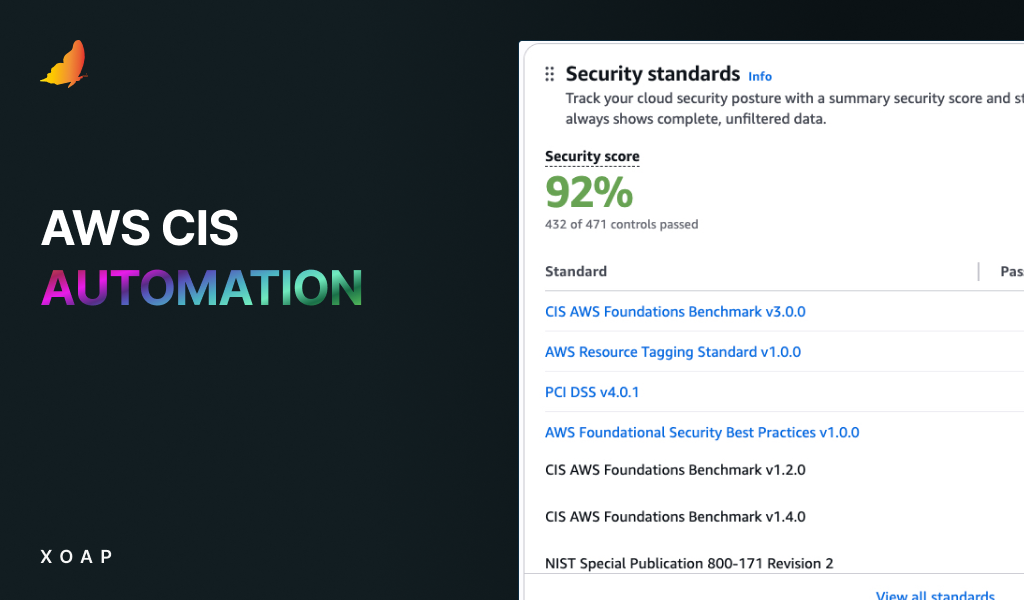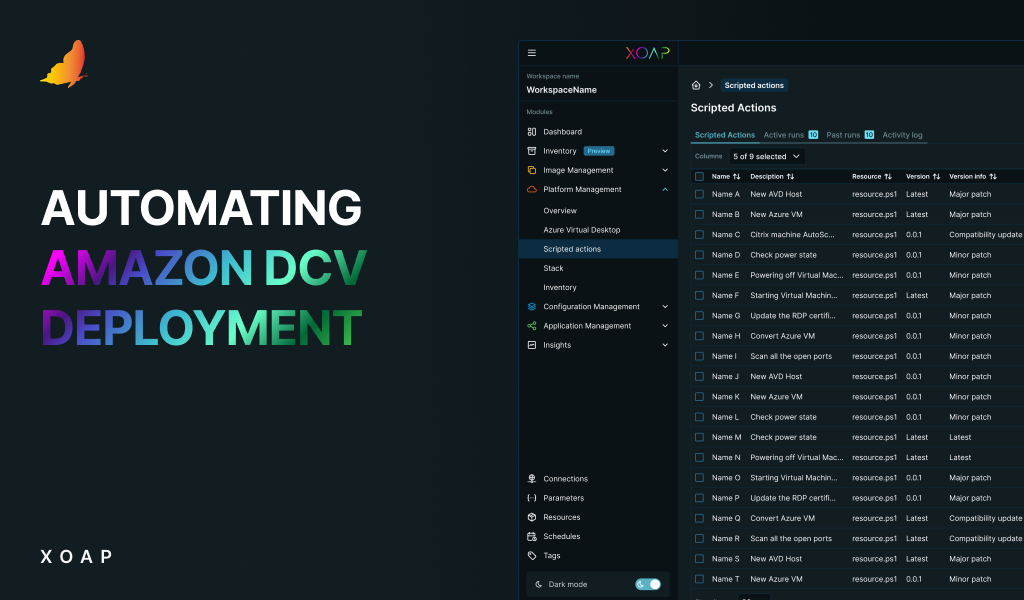Table of contents
If you’re managing AWS infrastructure, there’s a good chance Terraform is on your radar or already part of your pipeline.
However:
a) It’s not always necessary.
b) You might not need it at all.
The effort of writing HCL, managing state files and stitching together modules can slow things down, especially for operational tasks, account bootstrapping or cross-environment scripting.
If you want to make AWS automation faster, simpler and more flexible, XOAP can be a great option, whether you’re already using Terraform or want to avoid it completely.
Is Terraform really necessary?
While Terraform is great for building infrastructure, not every task is about provisioning VPCs or load balancers.
Much of what DevOps and cloud teams do looks more like this:
• Applying security settings at scale.
• Running scripts across multiple accounts.
• Automating patching, updates or cleanup.
• Enforcing compliance across environments.
• Configuring operating systems or installing apps.
You could try to model all of that in Terraform, but it’s a long road that requires a lot of solutions around just writing Terraform code to make it happen. It can also lead to fragile, overly complex setups.
📌 Read more about Securing AWS accounts automatically
Using XOAP instead
First, can XOAP replace Terraform entirely? In many cases, yes.
XOAP can provision infrastructure, not just manage existing environments. It does this through Scripted Actions and prebuilt automation templates that let you create and configure:
• EC2 instances.
• IAM roles and policies.
• VPCs and security groups.
• S3 buckets and encryption settings.
• GuardDuty, Config, CloudTrail and other AWS services.
Instead of declaring resources in HCL, you write scripts – or use ready-made ones available in your XOAP Workspace – that tell AWS exactly what to do, which gives you:
• More flexibility to define infrastructure your way.
• Easier cross-account and multi-region provisioning.
• The ability to use conditional logic, loops and dynamic inputs.
• Simpler onboarding with no need to learn Terraform internals.
XOAP can be your provisioning engine and your operations tool, especially if you prefer scripting over declarative IaC.
What this means in practice for AWS automation
By using your own scripts or XOAP’s pre-built templates, you can automate AWS tasks directly, across any number of accounts:
• Connect your AWS environments quickly (via access key or role).
• Create production-ready Landing Zones in minutes.
• Run Scripted Actions using PowerShell, CLI or your preferred language.
• Apply changes instantly or schedule them across time zones and regions.
• Automate configuration, security, updates and more.
No IaC files. No Terraform state. Just automation that works at scale.
📌 Read more about Automating entire AWS operations
Example: Automating patching across all your EC2s
Let’s say you want to update EC2 instances with security patches across five AWS accounts.
With Terraform, that means modeling your EC2 fleet declaratively, managing dependencies and state updates, and possibly writing a custom provider or pulling in external data.
With XOAP, it’s a Scripted Action: you select a patching script, pick the accounts and hit run.
Scripted Actions can also be scheduled to keep it fully automated.
This way, you get:
➜ Secure access to each account.
➜ Parallel execution across regions.
➜ Logging, audit trails and notifications.
📌 Read more about Automating Amazon DCV deployment
Already using Terraform? Even better!
If your team already uses Terraform for provisioning, keep going. XOAP isn’t here to replace it, but to complement it.
While Terraform covers infrastructure provisioning, XOAP handles:
• Day-2 operations like updates, restarts or application installations.
• Cross-account orchestration, particularly when it involves configuration that goes beyond the platform’s capabilities.
• Conditional flows based on runtime state, like remediation scripts.
• Orchestration of operational sequences.
• Central view of execution history and logs.
You can even trigger XOAP actions via API to keep your workflows clean and modular.
Try XOAP now
You don’t need Terraform to automate AWS.
If you’re spending time on repetitive tasks, dealing with multi-account complexity or just want a simpler path to automation, XOAP can help. And if you’re already deep into Terraform, XOAP fills the gaps.
Less time managing infrastructure code. More time actually automating what matters.



